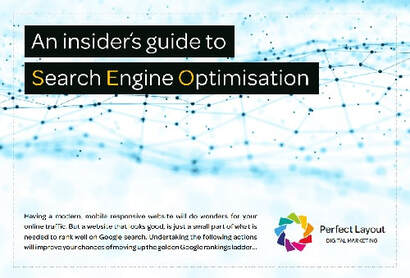|
In the world of virtual presence, your website serves as your virtual shop. It makes a big first impression on prospective clients and should represent your business well. Working alongside your web designer is a must; whether you're creating a brand-new website or updating an old one. But where do you even start? Before beginning your website design project, here are some important things to consider. Identity
First things first, let's talk about identity. Your website should reflect your brand’s personality and values. For this, you must share insights into your company’s ethos to guide the design process. Are you aiming for a sleek and modern vibe or something more playful and vibrant? Expressing your preferred colours sets the tone for your website’s visual identity. Font Font matters more than you might think. Do you see elegant serif typefaces or clean sans-serif fonts on your website? The typeface you select should improve readability and match the aesthetic of your brand. Talking with your designer about your preferred fonts can guarantee consistency on all pages. It will also enhance the user experience. Layout Design Layout design can make or break your website’s functionality. Are you leaning towards a clean and minimalist layout, or do you prefer a dynamic and interactive interface? Giving your designer ideas or examples of layouts you like will help them better grasp your vision and create a design that will appeal to your target market. Content Content is king, they say, but who will be responsible for creating it? Making that decision, whether you choose to write the content yourself or ask for help from your web designer, is essential to project preparation. If you decide to hire a copywriter, talk about your brand voice and key messaging to make sure the text flows naturally from your identity. Number of Pages How many pages will your website need? Outlining the framework in advance reduces confusion and saves time. Identifying the essential sections helps your designer create a clear plan for building the architecture of your website. Moreover, this planning facilitates more effective content management for your website. It enables you to set aside funds for content production, regardless of whether you choose to hire experts or write the content yourself. Services Since your services have a direct impact on the look and feel of your website, the designer must understand what you offer. Knowing what you offer allows the designer to deliberately draw attention to essential features, services, or goods so that users may quickly and easily find them. This knowledge enables the development of user-friendly navigational systems and visually striking design components that successfully highlight your distinctive value offer. Moreover, understanding your services also helps the designer optimise user engagement and conversion rates by customising the website's layout, content, and calls-to-action to match your business goals and the needs of your target audience. Budget You can control expectations and avoid scope creeping up by clearly defining your budget upfront. Be transparent with the designer about what you can afford so they can adjust their offers appropriately. Throughout the project, transparency guarantees that all parties are on the same page and builds confidence. Competitor Analysis Analysing competitors can provide insightful information about market trends and best practices. Giving your designer examples of competition websites you like and those you want to stand out from will provide the necessary background information. By combining rival site analyses, you can find areas for innovation and differentiate your business in a congested market. Remember, your website isn’t just pixels on a screen; it’s your digital storefront. As a result, it deserves careful attention and consideration every step of the way! Are you ready to discuss your project? Get in touch for an informal, no obligation chat today.
0 Comments
Your comment will be posted after it is approved.
Leave a Reply. |
Topics
All
|
Insider's guide to Search Engine Optimisation
Are you ready to improve your own website? Here's a front-page preview to our guide that can help. Complete the form and download your free copy!
Perfect Layout Digital Marketing
|
HoursM-F: 9am - 5pm
|
Telephone |
|
Copyright © 2024. All rights reserved. Blog policy. Privacy Policy. Photography by Picture Partnership






